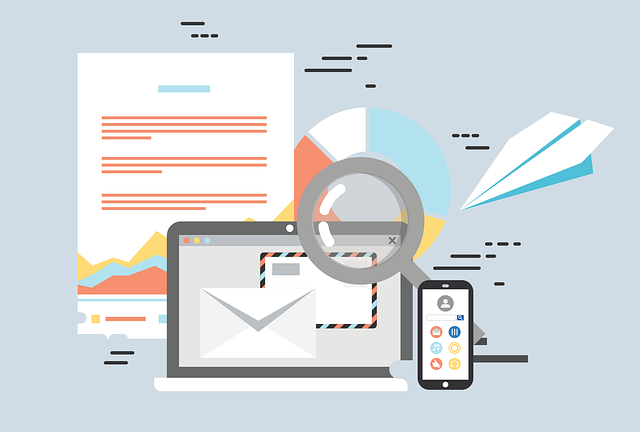This article on sales and marketing automation is for you if you feel that revenue potential is not being addressed and/or one of the following is true:
- You don\’t have an automation platform
- It\’s under-utilized and only used for occasional bulk announcements
- It\’s used for cold sales emails
If you are keen to put sales & marketing automation to work and generate additional growth, then this blog is for you.
Why is sales & marketing automation so challenging?
First, let\’s set the right context.
It\’s not as easy as buying a machine and turning on the switch.
Challenges with marketing & sales automation come up for several reasons.
Many of these challenges are not adequately addressed by the existing body of knowledge on the topic.
Here are 3 major reasons you may be facing challenges.
1. Complexity of Services:
You have many service offerings. This is common for most consulting and tech services firms.
Communicating all these and planning a solid demand generation program around these complexities array of services can be challenging.
In addition, creating structured, customer-centric content for diverse services can be incredibly complex – especially if you don\’t have many generalists in the company.
2. Relationship-Centric Sales:
Your business development involves relationship-centric sales where personal connections and trust play a significant role.
Relationships are multi-dimensional and complex. Long sales cycles make things difficult to predict.
In addition, most annual revenue comes from existing clients. In these scenarios, as you sell, you are also protecting current portfolios. So communication must be vetted to make sure it takes into account recent realities.
This is why most sales people are happy sending cold, automated emails to their prospects if they can control the sending (e.g. from their CRM) . But, of course, very few of them are pleased with their results.
3. Nature of customers:
Especially if you are selling to the enterprise, traditional funnel building methods like producing a lead magnet, generating a lead, and then nurturing customers doesn\’t work for most providers.
These customers at all levels have plenty of people courting them. And whether you like it or not, almost all of those reaching out sound just like you.
The Outcome
As a result, for marketing, the following become default, comfortable fallbacks:
- Focusing on brand awareness through PR and social
- Enabling sales through a collateral production factory
- Doing lead generation in a support role to one-off on-demand activities
That\’s because:
- Everyone can understand brand awareness and get behind feel-good mentions, eyeballs, and PR
- Everyone can see the brochures, animated videos, pretty slides, and webpages coming up
- No one wants to report \”three submissions from non-responsive Gmail addresses last month on a lead magnet\”.
That is, until sales hits a slump.
But there is a way, and we\’ll discuss that in the next sections.
Let\’s discuss the end goal first.
Step 0: Get your objective for marketing automation right
Marketing automation is excellent for driving growth through relationship building, i.e. generating leads and opportunities from warm customers and keeping the brand relevant & top of mind.
Even thought its clubbed together, cold lead generation – or email list building – is not the primary job of marketing automation. That\’s a different set of complementary capabilities. We\’ll see later how to set that up as well.
What are warm contacts? Those who have had an interaction with your brand.
For example:
- Met at an industry or partner event
- Attended a webinar
- Are a previous or existing client stakeholder
- Responded to sales outreach
- Introduced by a partner
- Were referred to us
- Submitted a form on the website (if any)
- etc.
These may not be leads yet, but by keeping in touch with relevant content and the right sales follow ups, they will likely result in becoming a lead at the right time. That\’s what marketing automation excels at.
Note that we have already addressed (or rather bypassed) challenge 3 from the previous section: \”Enterprise clients don\’t fill out our lead gen form\”. We really don\’t need them to.
But how do we start driving growth?
Let\’s keep going.
Step 1: Prioritize a segment
As tempting as it is, given the array of services, you can\’t start with every service and every business segment.
It\’s best to show some wins and then build on what works.
So pick the area you want to target. An area could be defined as a combination of things such as a service offering, target industry sector, size of clients, technology focus, etc.
If you are lucky, then picking this area will depend on factors such as:
- Where the brand building and growth focus is right now
- Current expertise of the sales and product/practice teams
- Availability of client stories
- Credible alliance partnerships
- Presence of a warm database
- Feasibility of expanding your warm database
- Potential for wins in the 3-6 months
- and so on.
If you don\’t have all this data, pick an area where sales has relationships.
Do this collaboratively between marketing, sales, and practices.
Step 2: Aggregate, Segment, & Enrich
Your client list is not a list of companies, it\’s a list of people.
These people have titles and have jobs to be done. They face challenges everyday and have both personal and professional goals.
They will also need your help. The right conditions haven\’t been created yet.
So, the first thing to do is to pull this database together and segment your target market in a way that are aligned with your sales offers.
What are the common sources of this data?
- CRM
- Old lists from events that are in spreadsheets
- Previous webinar attendees
- Lists of current client stakeholders who you have met with
- etc. (you may have to go prying)
One you have this data, then validate and enrich this data. People may have changed roles or companies, and email addresses must be updated. In my opinion, it\’s best to outsource this effort and save time.
The next step would be to create the target customer persona of this segment. A segment should have 1 overall persona for simplicity and ease of execution.
- What is their title?
- What are their key challenges?
- How they solve them today?
- What other stakeholders do they work with? (upstream, downstream)
- Who influences them? Who do they influence?
- What alternatives are available as solutions to their challenges?
- What brands do they like (your partners)
- Which events are they likely to attend?
- What reports or publication are they likely to read?
The more thinking that goes into all this, the better. But of course, don\’t spin your wheels. Keep iterating. Create more personas if needed – don\’t make a generic catch all persona.
Step 3: Define your sales offers
What?
Aren\’t our services the offers?
Arguably, no they are not. But don\’t panic, this scenario is pretty common. So let\’s think of what an offer is.
An offer is something that helps the client solve a challenge.
If you have made a customer persona in the step 2, then you have an idea of what challenges they have.
Challenges can be broad or narrow. Both are important, and more often than not they are all related. But you can still have multiple offers, and link them together.
For example, your client persona may be facing different challenges with AI or data management:
- Producing business reports without too much latency
- Looking to start using AI modeling to improve their performance
- Encountering severe data quality challenges
- Needing a data strategy
- Needing to build a business case for their AI models
- Migrating to a new data lake tool
- and so on.
Knowing the technologies (your partners), and these challenges, you can create multiple tangible offers that will appeal to your clients. Each offer will address a specific challenge.
These offers can also be combined together into a \”strategic offer\”. That offer will be the umbrella that links these together and can also be positioned perhaps to the C-level audience.
These individual sales offers that solve challenges become your sales offers. Price, past credentials, quality of delivery, location of services, etc. become supporting actors.
What about marketing offers? Let\’s cover that next.
Step 3.5: Tap into your partners
This is step 3.5 because it\’s closely linked to sales.
Think about it. Your partners are selling everyday to clients. And they are facing sales conversion, cross-sell, and upsell challenges every day.
With your complementary expertise, you offer them a way to sell better and faster. In fact, research indicates that sales cycles are 30% shorter when a partner is involved.
Align your sales offers with your partner\’s value proposition.
- Perhaps clients are unable to picture your partner\’s solution in their enterprise. Can you help clarify that?
- Perhaps there is a prerequisite before the partner\’s solution can be implemented. e.g. technical integrations. Can you help?
- And so on.
Once you start analyzing the business process or the value chain, you will discover plenty of opportunities to align your offers.
If your offers solve real challenges, then you will add a new category of warm contacts to your list – those that your partners introduce you to.
Step 4: Developing your marketing offers
Aren\’t they the same as sales offers?
The purpose of marketing offers is engagement. They are essentially content:
- Written – blogs, articles, PDFs, infographics, etc.
- Videos – webinars, solution demos, how to guides, etc.
All content should be specific, reflect the expertise of your company, and map back to your sales offers.
Avoid overly general topics that cannot easily be tied back to your offers. (e.g. the pros and cons of Fed\’s monetary policy, rise of fake news in the US mainstream media, etc.).
Also, no click-bait. Creating a great title that promises a lot but then under delivers is a surefire way to alienate your prospects and clients.
Don\’t worry too much about you exposing a secret solution. Just Google the topic – chances are that you\’ll see that you\’re not alone.
4.1 Ungated content:
Creating ungated content that is worth reading is very important for client engagement.
Too many times we produce ungated content that\’s just word salad geared for SEO, for meeting PR goals, and to make an executive happy.
However, the ONLY person who you should worry about is the target client persona.
- Will they find it useful?
- Will my sales team put their credibility on the line and send it to clients?
Avoid content that doesn\’t offer anything new.
So what\’s good ungated content:
- A practical point of view on an emerging trend (e.g. generative AI in the enterprise – issues and solutions)
- A success story that shows how to solve a problem (e.g. how we integrated AI models with business applications using APIs)
- A technical best practice (e.g. here\’s how to deploy Snowflake on AWS)
- Clarifying how a partner\’s product works (e.g. connecting your ecommerce system with Salesforce.com)
- A demo
- etc.
The common thread is \”insight\”. Ungated content should be something you will be proud of. It\’s not just another content delivery checkbox.
4.2 The right gated content:
The topics for the gated content should center around something that the clients won\’t get elsewhere. The more specific it is the better.
Here are some ideas that work:
- Upsell from ungated content. If you\’ve written a good blog on the promise of generative AI in insurance, then upsell to a PDF on \”3 generative use cases for insurance claims automation and a reference architecture for implementation\”. That way, both the blog and the PDF are specific and add immense value.
- Borrow credibility. Your partners are selling to clients everyday. It also means that their installed base has lots of challenges. Dig into your experience and publish an insight your clients would appreciate. Perhaps an integration between 2 systems, or a deployment architecture that is more scalable, and so on.
- Publish research.
We often think of gated content as lead generation tools.
I also like to think of gated content as an \”exclusivity\” indicator. We\’ll send the raw link to our clients and let them access something that\’s not available for everyone else.
With this type of gated and ungated content, you will create a brand people will know and trust. Then it will start generating new leads as well.
Step 5: Set up your marketing automation flows
At this point, you are ready to get started with your marketing automation flows.
To avoid getting crushed under the weight of our design, we\’ll start small, and ignore all the shiny capabilities of the system that you have subscribed to.
Our objectives are:
- Keep top of mind
- Position our offers every once in a while
- Track what resonates
So if you are just starting out, I recommend creating a single nurturing sequence that sends out the valuable content we have (or are planning to create) every 10 or15 working days.
- Set it to go out from the sales owner (account owner if it\’s an existing client). Not from \”marketing@yourcompany dot com\”.
- Review with all sales persons the content topics to avoid surprises
- Give them time to inform their clients that they will send them periodic emails with links to blogs etc.
- Every time there is a click, diverge from the main sequence, and send a related sales offer. Also, send a notification to the sales owner. Then get back to the main sequence.
- Every time you have a new one-off activity (e.g. a webinar), pause the nurturing sequence, and switch to one-off emails instead. You may include the webinar in a regular email as well and see the comparison of clicks and opens.
- When you write new content, just add that to the nurturing sequence.
- Every 6 months, review and update your emails and your online content.
That\’s all you have to do. It sounds simple but it does need constant monitoring and attention.
Now let\’s see how to action the outcomes.
Step 6: Reporting and actioning
Now that the automation sequences are purring, every week:
- Generate a report on sends, clicks, opens, bounces, and unsubscribes.
- Generate by sales person.
- Share that will the entire sales team.
- Let them see the details online.
The bounces become potential referrals at new companies because they have likely changed jobs. So time to reach out.
The unsubscribes becomes a trigger for sales to reach out in-person to get feedback. Did we target them incorrectly, was our content not good, etc.?
The clicks become an indicator that a sales offer needs to be followed up on.
- Use channels such as LinkedIn or phone
- Use tools such as Hotjar or Lucky Orange and see the behavior
- etc.
This machine does have many moving parts. But with time, you will get used to it.
And you will see a significant uptick in sales opportunities starting within a few months.
Step 7: Plan to grow your warm contact database
Your database must grow constantly. Your marketing automation initiative goes hand in hand with:
- Executing an events calendar – industry, partner, and local
- Conducting online events such as webinars
- Working more closely with partners
- Working through referrals
- Working with your prospecting team to transfer contacts over
Although buying a database sounds like an excellent shortcut, it is ineffective unless you are embarking on a bulk outreach experiment.
Next steps
As you can imagine, a sales and marketing automation program has potential to being your entire organization working together in a customer centric manner.
The basic preparation steps from the blueprint above has itself resulted in 20-30% pipeline increase within 90-120 days. At the end of the day, it comes down to focus and an offer that
Good luck. As always, if you have any questions, or need any assistance, please contact me.
PS:
You can look at HubSpot (affiliate link) as a combo sales + marketing system if you are looking to scale your revenue generation.
Having implemented this multiple times, I like HubSpot because you don\’t have to integrate and sync data from 2 different systems constantly. I can help you analyze the right systems too if you are in a bind.
Set up a no-commitment strategy call.



